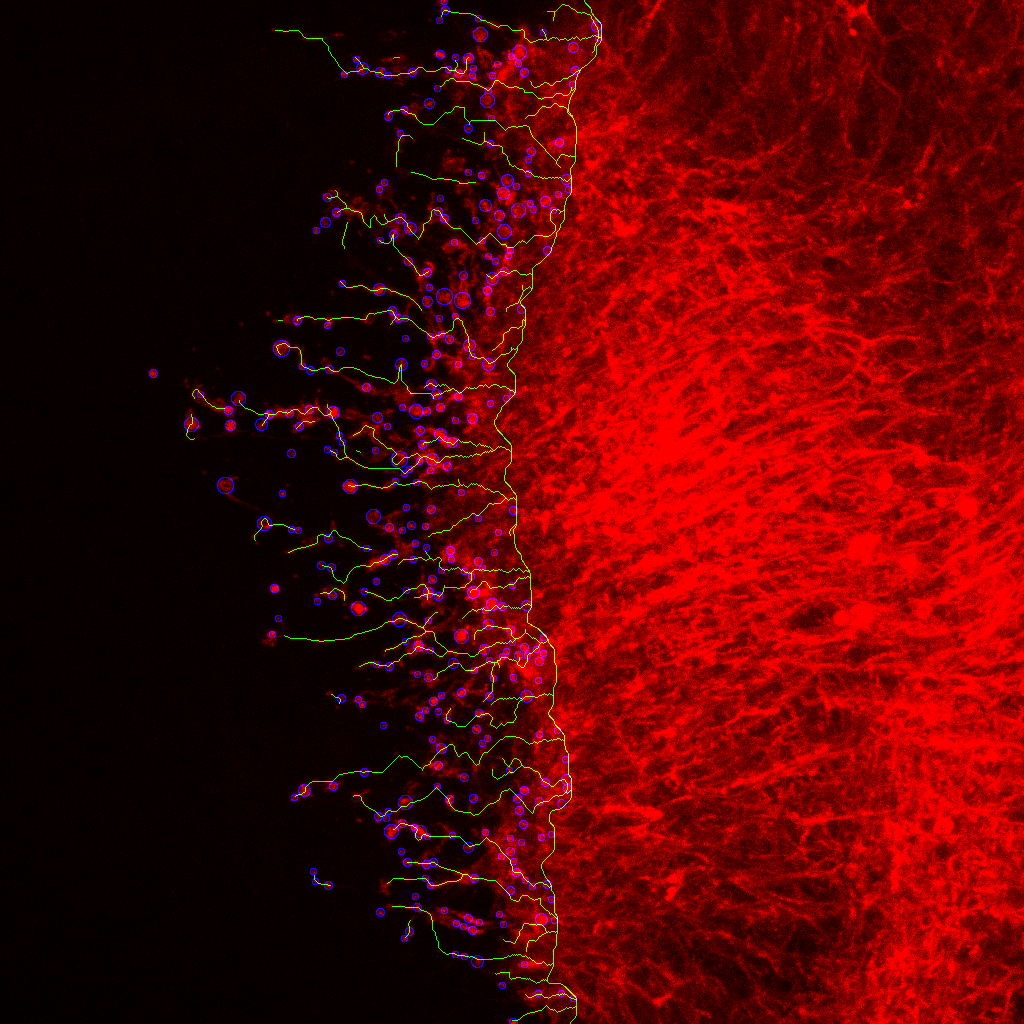Section: New Results
Cytoneme detection and characterization
Participants : Eric Debreuve, Xavier Descombes.
This work is made in collaboration with Caterina Novelli, Tamas Matusek, Pascal Thérond (iBV).
This work is supported by the ANR project HMOVE. Cellular communication is one of the most important processes for controlling the morphogenesis of organs (i.e. the set of laws that determine the structure of tissues and organs during embryonic development). Understanding the communication both ways is an important issue in the field of developmental biology and it has recently been shown that the exchange of information between cells is controlled by long cellular extensions called "cytonemes”. Last year, we had developed a pipeline for automatic cell membrane detection and cytoneme extraction from in vivo images obtained by confocal microscopy. When testing the proposed method on new images with varying acquisition conditions, we found it to be less reliable than expected. While retaining the same general philosophy (use of Frangi enhancement filter, skeletonization, and Dijkstra shortest path algorithm), we largely rethought the approach to make it more robust to acquisition conditions, more reliable in general, and faster (see Fig. 4). Some topological and geometrical features are then computed on the graph-based representation of the cytonemes in order to characterize in which respect wild-type and mutant conditions are different or similar. A journal paper is in preparation based on the analysis and interpretation of these results by our biologist colleagues.



